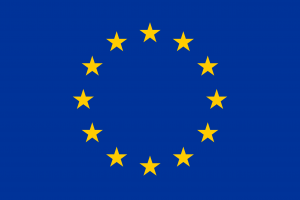EU Statement on Thematic session 2: “Drug Treatment and Health Services Falling Short of Meeting Needs; Increase in Deaths Related to Drug Use
Distinguished Chair, Excellencies, Ladies and Gentlemen,
I have the honour to speak on behalf of the European Union and its Member States. Albania, Bosnia and Herzegovina, Georgia, Iceland, Montenegro, North Macedonia, Norway, Republic of Moldova, Serbia and Ukraine align themselves with this statement.
I would like to start by recalling that achieving universal health coverage and access to quality essential health-care services is part of the Sustainable Development Goals and of universally accepted human rights standards as pointed out by the WHO[1]. However, such access remains insufficient, especially for persons in vulnerable situations and specifically for people who use drugs. According to the World Drug Report 2025, even though an estimated 64 million people worldwide suffer from drug use disorders, only about 1 in 12 people receive drug treatment. Moreover, the coverage of drug treatment has been decreasing, and women encounter additional barriers when accessing these services.
Strengthening health and social responses and in particular treatment and care services and ensuring gender- and cultural sensitive access to them remains an important strategic priority in the EU Drugs Strategy 2021-2025 within its comprehensive approach to addressing the drugs situation. According to the European Drug Report 2025, around half of high-risk people who use opioids receive some form of opioid agonist treatment in the EU, an estimated half a million clients. However, there are big disparities among Member States, with estimates of opioid agonist treatment coverage varying from less than 10% to more than 85%. This indicates room for improvement and the need for further efforts to reduce health inequality.
In addition to treatment, evidence-based harm reduction interventions also remain among the most common public health measures targeting the risks related to drug use, especially but not exclusively those associated with injecting drugs. Here too, more can be done, for example, in giving access to all people who use drugs who are HIV positive and/or chronically infected with HCV, to antiviral treatment, noting that in some EU Member States the HIV prevalence among people who inject drugs is above 15% and 50% are chronically infected with HCV. Needle and syringe programmes, as well as the provision of opioid agonist treatment, can also reduce the risk of HCV transmission. In order to meet the commitment to the WHO global health sector strategies to end AIDS and the epidemics of viral hepatitis and sexually transmitted infections by 2030, greater efforts will be needed to prevent future outbreaks and reduce transmission, including by investing in harm reduction services, testing and linkage to treatment.
The EU is committed to effectively responding to such health-related challenges through a comprehensive approach. For nearly two decades, the EU has supported harm reduction measures for HIV, hepatitis, and other communicable diseases among persons in vulnerable situations, including people who use drugs. Since 2023, over 20 million euro have been allocated to boost community-based health interventions and address vaccine-preventable diseases, including those related to drug use, reinforcing the EU's health security. This aides EU Member States in achieving health-related Sustainable Development Goals.
Evolving drugs markets with growing stimulant-related problems indicate the need of further research and service development. The EUDA, the UNODC and the WHO are developing a joint initiative named Scale-up to support the treatment of stimulant -related problems. This initiative is expected to contribute to providing evidence- and human rights-based and health-centered response to stimulant use disorders.
We are also witnessing the increase in deaths related to drug use, both globally and in the European Union. It is estimated that at least 7459 overdose deaths involving drugs occurred in the European Union in 2023 [compared to 7145 in 2022]. The mortality rate due to overdoses in the European Union in 2023 is estimated at 24.7 deaths per million population aged 15 to 64. Beyond overdose deaths, people who use drugs have also a higher risk of deaths associated with other causes such as violence, cardio-vascular causes, cancer, infections and suicides. More robust data on direct and indirect causes of drug-related deaths would help to better understand the phenomenon and prepare more effective responses.
The growing availability of synthetic opioids and appearance of highly potent substances, such as nitazenes, indicates that overdose prevention needs to be scaled up. EUDA-led initiatives in the EU such as the establishment of a network of forensic and toxicological laboratories that will strengthen the analytical capacity to detect highly potent synthetic opioids in drug samples, combined with early warning and rapid risk communication, are important to support interventions targeting overdose prevention. Other measures, such as take-home naloxone and peer-to-peer distribution programmes as well as drug consumption rooms are also increasingly available in Member States.
Overall, a more integrated approach to testing and linkage to care is an effective way to reduce persistent health inequity. The joint EUDA-ECDC guidance on the prevention and control of infectious diseases among people who inject drugs supports the implementation of tailored community-based prevention, testing and treatment services, for example, testing outside of formal healthcare settings.
Distinguished Chair,
The right to health for everyone must be ensured, and we should continue working towards health care and social services that are both effective and equally accessible for everyone, taking into account the special needs of people who use drugs, including gender-specific experiences, their families and the communities they belong to. In the light of evolving drug markets, we should also keep working to regularly adapt treatments to emerging trends, as well as develop new and effective forms of treatment in collaboration with different stakeholders, including clinical and scientific communities and the civil society, with the overall goal of reducing the negative consequences of drug use.
Thank you, Mr. Chair.
[1] Reference: Human rights (who.int)
